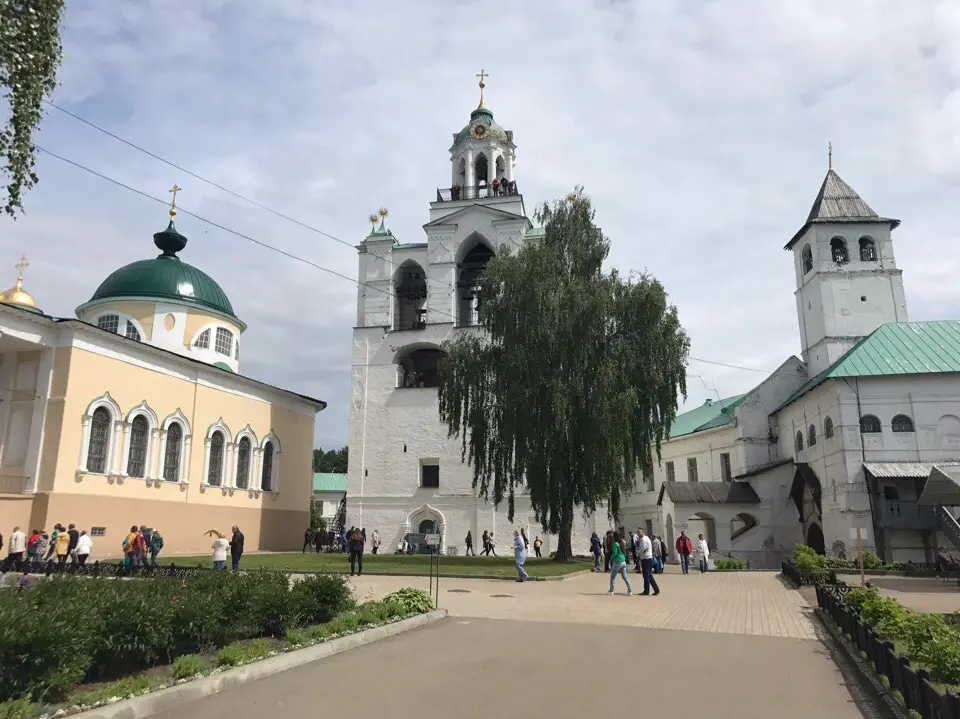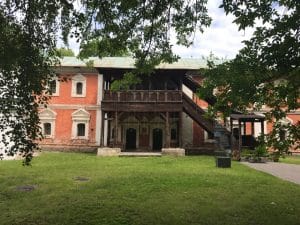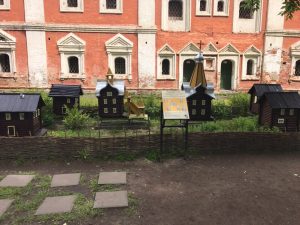Yaroslavl, located a five-hour train ride from Moscow, is often considered to be the capital of the “Golden Ring” – a collection of towns whose prominence in Russian history can be traced back to the rise of Moscow or before. It is the only city in Russia other than Saint Petersburg to have its entire downtown named a UNESCO World Heritage Site.
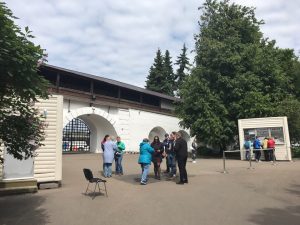
The Yaroslavl State Museum-Preserve, located within that downtown area, is fascinating in its structure. It is not a museum enclosed in a building, but a unified museum complex: a collection of open-air locations, preserved historic buildings, and other facilities. It has also been named a “preserve,” or protected area of land, under Russian law. Both of its major statuses, under UNESCO and Russian law, mean that the look, feel, and structure of the complex cannot be significantly changed.
The museum-preserve is one of the oldest sights to see on the Golden Ring. It has been carefully restored within the restrictions placed on it and, while it feels clean and cared for, it has been left with an unmistaken “old” feel in the roughness of its landscape and walls. The complex is also comfortable, however, and is augmented by a collection of benches, souvenir shops, cafes, and even playgrounds scattered throughout the area.
Today, it is the city’s biggest attraction and visited by thousands of tourists each year. Located on the city’s main square and overlooking the Kotorosl River, the complex is surrounded by a large wall that dates back nearly 700 years. Because of the wall, the area is often referred to inaccurately as “Yaroslavl Kremlin” (“kremlin” meaning “fortress” in Russian). The name is a misnomer, however, as it was never truly a kremlin but a monastery.
The museum’s full name is The Yaroslavl State Historical, Architectural, and Artistic Museum-Preserve and, as that might imply, the complex is ideal for those looking to get a taste of Russian history, art, and culture, as well as those just looking for a nice place to spend an afternoon. Entrance beyond the walls costs 40 rubles per person, and each individual museum inside the walls costs an additional fee. Student discounts are available.
The Belfry
The Belfry served as a bell tower for the old monetary of Yaroslavl, and is the tallest building inside of the museum walls. The structure is over 30 feet tall and is located on the western-most side of the complex. Tickets are available to climb the structure and witness an awe-inspiring view of Yaroslavl at the top. No other structure in Yaroslavl provides such a compressive view of both the city and the Volga River. A small narrow staircase winds through the tower leading to the top, and only a few visitors are allowed in the tower at a time. Tickets are priced at 200 rubles a person.
Transfiguration of the Savior Cathedral
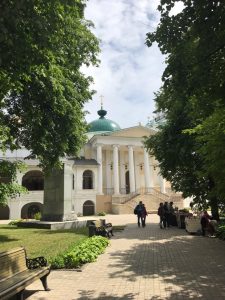
The Transfiguration of the Savior Cathedral is located due east of the bell tower. It is the oldest free-standing building in Yaroslavl, dating back to the 16th century, and is distinguishable even outside the walls of the complex by its large golden domes. While the outside of the cathedral is frequently restored due to structural degradations, the inside has survived relatively undamaged throughout the Soviet period, making its old architecture a true relic of Russian heritage. With the exception of occasional restorations, the ancient religious depictions that cover every wall and corridor of the inside have remained intact from the cathedral’s origins, making it unlike other Orthodox monasteries in the city. The cathedral no longer functions as a church, and is now just a museum open to the public. The price to enter varies depending on what time of the day you visit, and generally increases in the late afternoon and evening.
The Church of Saint Nicholas the Miracle Worker
The Church of Saint Nicholas the Miracle Worker was built into the Transfiguration Cathedral in the late 19th century and features similar religious depictions as the large cathedral, but noticeably more modern. The complex as a whole, then, serves as a good measure of how Orthodox cathedrals have evolved over time. Tickets for the Church are included in any ticket to the Transfiguration of the Savior Cathedral.
Treasures of Yaroslavl Exhibition
The Treasures of Yaroslavl Exhibit is located in what used to be the monks’ quarters of the monastery. It is an old two-story building made entirely of wood that lies on the eastern side of the complex and spans across half its length. Inside the exhibition are a collection of ancient artifacts relevant to the history of the monastery, including religious crosses, icons, robes, crowns and other religious artifacts. The main attraction is the vast array of religious jewelry, consisting primarily of gold and silver trinkets. The cost of entrance is 50 rubles.
Masha the Bear Exhibition
An anomaly in relation to the rest of the museum is Masha the Bear, an adult brown bear who lives in an enclosed area on the south side of the museum. Masha is known as the “symbol” for the city, as the Yaroslavl coat of arms depicts a Russian bear holding an axe, making Masha a living representation for the city’s history. Tourists can walk around the enclosure to see Masha for a small fee in the spring and summer months. Tickets cost 100 rubles per person.
Additional Exhibits and Museums
While my visit to the Yaroslavl State Museum lasted only an afternoon, it would take almost two days to see everything within the walls of the State Museum. Most tourists don’t end up seeing the entire complex with just one visit. In addition to the above exhibitions, the State Museum contains individual museums focused on the History of Yaroslavl, famous icons in Yaroslavl, and a Nature Museum on the various types of plants and animals in the Yaroslavl Region. There are also various outdoor exhibits including a miniature replica of ancient Yaroslavl, a collection of old bells from the Belfry, and a walking tour through the old stone walls around the monastery. The cost of these activities varies from free to 300 rubles.
Overall Experience
The unique mix of historic and modern elements in the museum complex tells a tale of Yaroslavl from past to present. A visit to the complex is an immersive experience in Yaroslavl’s culture, history, and traditions and reveals a city that is in love with its history and carefully maintaining its heritage. It has done so, however, in a way that provides its modern citizens with a comfortable public space that lends character and identity to its downtown, as well as an attractive draw to bring tourists to help contribute to the local economy. A visit to Yaroslavl’s museum offers a glimpse into this deep past and a new perspective on modern Russia.
You can take a virtual tour of the complex via Google Streetview!


